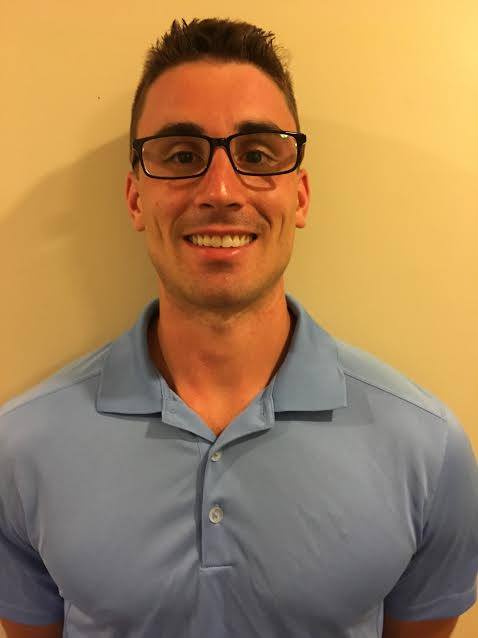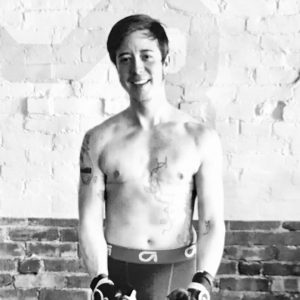Your Guide to Creating Healthy Clients for Life
I’m en route to Vancouver for the weekend to teach a workshop (solid planning, right? Picking Superbowl weekend to host a fitness event), so I have a super sick guest post from Justin Kompf today to keep you entertained and informed.
****
It was the end of our six-week program at Clientel3, a studio in Boston and everyone was weighing in to see if they had hit their goals.
River, who had signed up for a muscle gain program, had hit his goal of gaining 10 pounds (while decreasing his body fat %). He took another look at his before and after pictures and with a big grin on his face said to me, “I think I got the bug coach”
- Before
- After
People exercise for a variety of reasons: to look better naked, to make an ex think they made a terrible mistake, because their doctor said they needed to, because it is conducive with other life goals, out of guilt, or simply because they love it.
To me, “I think I got the bug coach” signified a love for the activity and a respect for the process and outcomes of the process.
I think all coaches should have an interest in how they can help people fall in love with the process.
Helping People Catch the Bug
Most good coaches got into the field because they saw the benefits of exercise and healthy living and decided that they would like to help other people achieve their health and fitness goals.
Our goal then is to create life-long exercisers, people who have “caught the bug”.
Unfortunately, this doesn’t always happen and most people who start an exercise program stop and most people who lose weight gain it back.
But this likely doesn’t happen for people who fall in love with the process, those who make it a part of their daily life.
Of course, there are components that a coach cannot control but there are three critical things that a coach can control including the following (1) increasing the client’s confidence in their skills, (2) providing autonomy support and (3) creating community.
Increase Client’s Confidence
Albert Bandura is a highly renowned social psychologist who coined the term self-efficacy. This is an individual’s belief in their ability to succeed in any given situation.
One of the biggest contributors to increased self-efficacy is mastery experience, that is, setting clients up to be successful with technique or dietary changes.
Too small of a challenge might not increase self-efficacy as there are no barriers to overcome whereas too great of a challenge can be disheartening and set a client up for failure. There was an interesting 2004 article published in the Journal of Motor Behavior1 that introduced the concept of the challenge point.
The challenge point is an optimal point for learning. It is a point that, while minimal, errors still do exist. If no errors exist there is no more room for learning and if too many errors exist learning is too challenging.
Minimal error: foot pronation on a goblet squat
Maximal error: complete valgus collapse on a back squat
A trainer should select an exercise based on the challenge point concept. Once a client has mastered a variety of complex exercises they can increase the training load on these exercises.
By doing this a client will see that they have the ability to get stronger and complete task that they never could have imagined.
Provide Autonomy Support
Autonomy occurs when a client can freely choose what they want to do. A client isn’t going to be excited to come to the gym if they are forced to do exercises they truly don’t like.
Plus, they will feel like they aren’t being listened to if the coach continually incorporates exercises they think are good for the client. The same thing goes for dietary behaviors. If a client doesn’t want to eat broccoli, don’t make them eat broccoli.
It’s not possible to love an activity, behavior, or exercise if it is not enjoyable to some extent.
Autonomy support is a lot like walking with a client to where they want to go rather than dragging them there. Find out what behaviors or exercises both are suitable to goal achievement and enjoyable.
It’s also important to let a client know that you genuinely care about them, their health and goals regardless of how they get there. There is a time and a place to be firm and let the client know if their ideas are not based in science (i.e a cleanse) but this can be done in a respectful way (i.e. don’t say “that’s stupid”).
Create Community
Some of the best facilities I’ve visited have done a great job of creating community. The trainers know all the members/client’s names and the clients know each other’s names. What is created is essentially a home away from home or better yet a family.
At the end of our recent 6-week challenge at Clientel3 one of the members told me that one of the impressive things I did was learn about 80 names by heart in one week. This little thing had nothing to do with coaching exercises. It was just an extra way that I could show people that they mattered.
Set up an environment where clients get to training sessions early and leave late just because they want to see each other. Create an environment that is based on genuine friendships through shared goals.
Lastly, setting up virtual communities via Facebook is another great idea to provide ongoing support. If you train 80-100 individuals in small group or large group settings, create a page where they can interact, ask questions, and share advice.
Creating Sustainable Change
Change isn’t easy, that’s why most of us fall back onto our old behaviors despite our best intentions. While there is a lot a coach cannot control there are several things they can that will make a big impact.
Help a client make the change process an easier one by increasing their confidence, allowing them to have a say in their path (autonomy support) and by creating community.
Reference
Guadagnoli MA and Lee TD. Challenge point: A framework for conceptualizing the effects of various practice conditions in motor learning. J Mot Behav 36: 212–224, 2004
Bio:

Justin is a certified personal trainer and strength and conditioning coach. He served as SUNY Cortland’s head strength coach from 2013 to 2017 prior to starting a doctoral program in exercise and health science. You can follow Justin on Facebook and Instagram. You can also follow Justin’s blog here


One Response to Your Guide to Creating Healthy Clients for Life